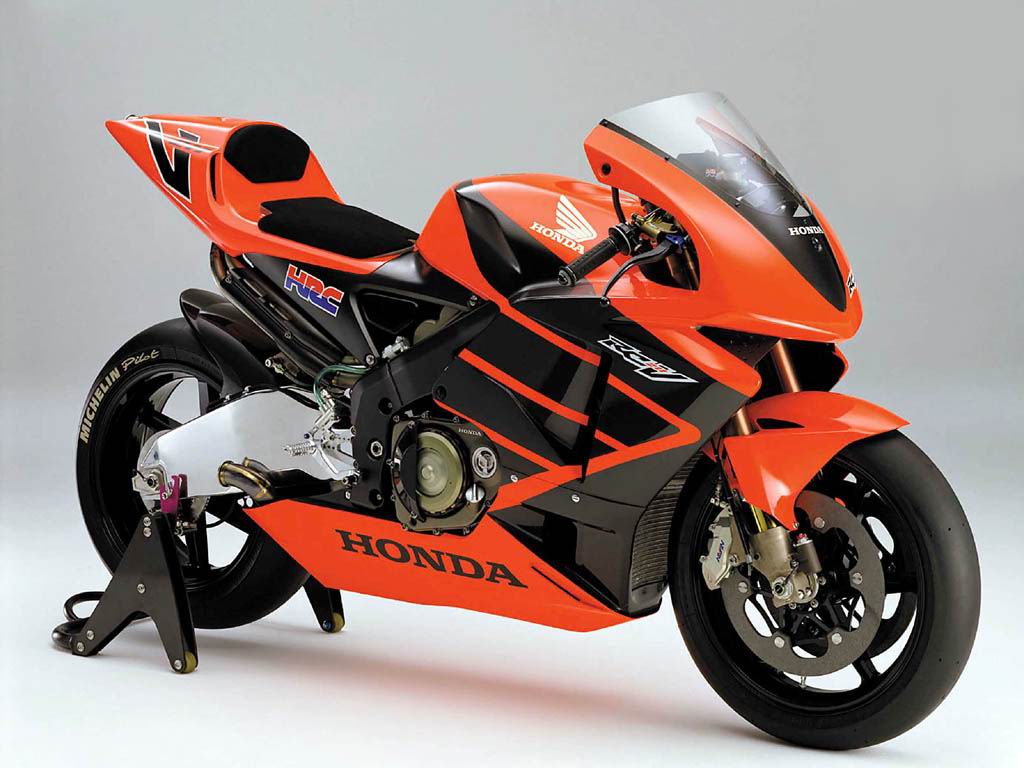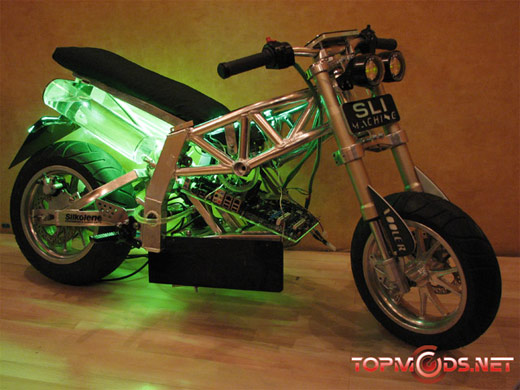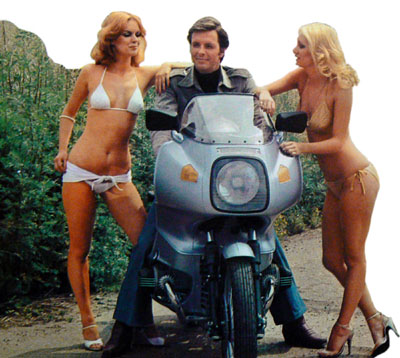 In 1963, a little over a year after their successful '24-hour at 100mph' record (using a 500cc Venom), the Veloce factory decided to make a second attempt at a 24-hour record, using a 350cc 'Viper' model, which had been specially tuned for the purpose. This unsuccessful attempt has gone under-reported in past publications, as a footnote in history, but I think it brings the success of that 1961 attempt into higher relief, showing just how many factors must go right to pull off such a feat. [top photo, Veloce Managing Director Bertie Goodman at speed]
In 1963, a little over a year after their successful '24-hour at 100mph' record (using a 500cc Venom), the Veloce factory decided to make a second attempt at a 24-hour record, using a 350cc 'Viper' model, which had been specially tuned for the purpose. This unsuccessful attempt has gone under-reported in past publications, as a footnote in history, but I think it brings the success of that 1961 attempt into higher relief, showing just how many factors must go right to pull off such a feat. [top photo, Veloce Managing Director Bertie Goodman at speed]Both attempts took place with an Anglo-French team at the Montlhery speed bowl, a 2.7km concrete track (still extant, although perhaps not for long... this track is as historic as Brooklands, and must be saved!), with a notoriously bumpy surface (to which I can attest, having ridden a MkVIII KTT Velo there), and rather poor facilities, especially track lighting. Obviously, if a machine is to be run for 24 hours, the track needs to be lighted, and Montlhery is distinctly dark at night, being in the forest. Both attempts used rows of parked cars with their headlamps on, to light the track at intervals - odd in the first instance, but notably dangerous when you consider that each 'beam' was a perpendicular flash of light at 100mph, creating a dizzying stroboscopic effect which was a serious hazard for the riders. In fact, one of the French team became so disoriented late at night that he crashed during the Venom attempt, setting back the whole exercise for half an hour, while the machine was sorted out. Luckily the team had enough time in hand to absorb this delay, and just squeaked over the magic 'ton', at 100.05mph for the 24 hours.

[Second photo; Georges Monneret, many-time French national racing champion and veteran of the '61 24-hr record, adjusts his goggles, as Bertie looks on]
The Viper model as standard shares the cycle parts of the 500cc Venom, as was common in the cost-cutting British industry at the time, so it bore a weight handicap relative to its larger brother, at 380lbs. And while the Venom is 'square' at 86mm bore/stroke, the Viper is decidedly a long-stroke, using 72 x 86mm dimensions (a 'sleeved-down' Venom engine, with smaller combustion chamber, valve size, and inlet tract/carburetor).
The 350cc Viper used in the 1963 attempt was a very special machine, and hardly 'standard'. The most radical departure from catalog spec was a dry-sump gearbox with an oil pump, which sprayed oil from jets onto the gears, then recirculated the lubricant, to keep the oil cool and reduce drag, and saved a few horsepower. The TT carb had its float bowl remotely mounted on the oil tank, a la the pukka racing KTT model, the exhaust valve was filled with sodium for cooling, an unsilenced reverse-cone megaphone, and full Avonaire racing fairing (adding 6-10mph to the top speed) were used. The piston was a specially sand-cast item shaped to give a 10:1 compression ratio (the 24-hr Venom used 8.75:1). This piston eventually put paid to the whole attempt, when the crown separated from the body above the gudgeon pin. Ivan Rhodes speculates that the ignition misfires and a fairing bracket which partially masked the cylinder head could have raised temperatures enough to cause failure of the piston. In any case, the two difficulties encountered during the attempt - a misfire from the magneto and the broken piston - were from components not made by Veloce! Small consolation for a failed attempt.

[Third photo; Bertie Goodman prepares to push off for a stint]
The Viper turned out to be more comfortable than the '61 Venom, as the front forks now had compression damping as well as rebound damping; this 'extra' was recently introduced to their sporting 'Clubman' models, and really helped over Montlhery's bumps. The steering and true-running were faultless, even when airborne over those bumps at over 100mph.
The machine was geared to reach 110mph (176km/hr) at 6500rpm, and after 6 hours, the Viper had an average speed of 104.7mph; faster thus far than the '61 Venom. The hourly average, excluding pit stops of 75 seconds each, was 105.1mph, which was fully 23mph faster than the existing class record, established in 1961 by a 175cc Bultaco two-stroke.
The following is the verbatim text from Motor Cycling, July 17, 1963, written by Bruce Main-Smith, who joined in the attempt:
"Cruel misfortune has just dashed the Veloce factory’s hopes of bagging the 12- and 24-hour world records at over 100 mph with a 350 on this fiendishly bumpy 1.6-mile speed bowl, near Paris. With a stock Velocette “Viper” tuned to give some 110 mph at 6,500, we started the attempt yesterday. But after 6.5 hours at an average of 104.7 mph, the ht lead came adrift inside the magneto’s brush-holder moulding. [the Lucas factory had failed to solder the vital metal washer which holds the ignition wire in contact with the magneto brush - pd'o]
Up to that time, the hourly average-excluding pit stops of about 75 seconds each-had been no less than 105.1 mph - 23mph up on the 24-hour class figure established by a 175 cc Bultaco in 1961.
The “Viper” was running with complete regularity and seems ready to equal the 'Venom’s' 24-hour 100.03 mph of 1961. It was, in fact, improving slightly on the '500's' speed.
However, the second attempt, started at 10.40 a.m. on Sunday, failed after 1 hour 44 min. at an average of 102.5 mph with suspected gudgeon-pin fracture which it was quite clear that factory mechanic, Jack Passant, could not remedy in time to keep the average above 100 mph.

[Fourth photo; Bruce Main-Smith 'down to it' on the concrete banking]
The 'Viper' was permanently disabled and the extent of the damage cannot be determined until the head and barrel are lifted at Hall Green later this week.
As No. 3 rider, I took over in the first attempt after veteran Georges Monneret had done a 1 ¼- hour stint and Veloce sales director Bertie Goodman had put in 1 ½ hours-an endurance close to the limit of the 5 ¼-gallon tank.
Better than the ‘Venom’
The engine was running perfectly with no trace of vibration. Navigation and line-holding when airborne over the ripples were dead accurate. Comfort over the appalling Monthery bumps was much better than on the “Venom” in 1961 – apparently owing to improved front-fork damping on the impact stroke.
Rider fatigue was minimized by a specially-prepared “Avonaire” fairing which, I was told, added between 6 and 8 mph to the “Viper’s” maximum, depending on the rider’s stature and his ability to get in behind the dolphin. And taking over from me, ex-French champion Benjamin Savoye averaged 109.6 mph with complete consistency and no sign of the motor tiring.
The “Viper” showed no signs of overheating, in fact a deflector plate was fitted to the air intake to raise the oil tank temperature after it had proved to be on the low side in practice.
Magneto failure was about as close to bad luck as you can come in competitive events. On the other hand piston failure is never unexpected in high-performance work of this kind. During the magneto replacement and general adjustment session the inside of the head revealed well-nigh perfect carboration erring--if that’s the word—on the rich side.
A 10:1 cr piston, specially made for the job, was used. With the megaphone and sodium-cooled exhaust valve, it was one of the few parts that are not available to any Velocette owner from the factory’s stores. "
Many thanks to Dennis Quinlan for vital information and photos; data also taken from 'Velocette Production Motorcycles' (Walker), 'Velocette Motorcycles' (Burris), and 'Technical Excellence Exemplified' (Rhodes).









No comments:
Post a Comment